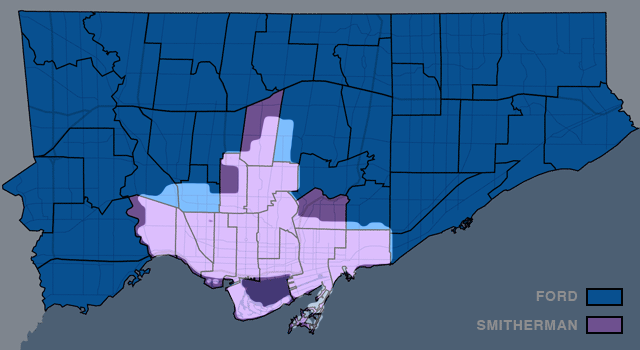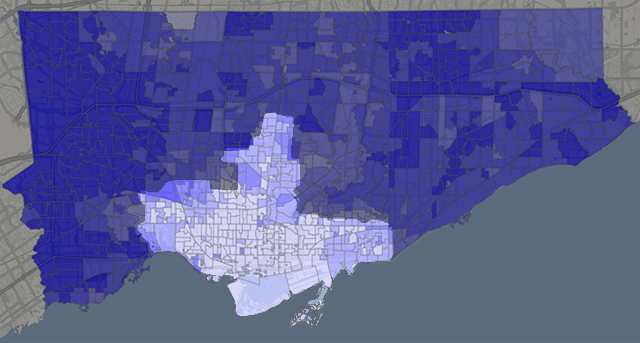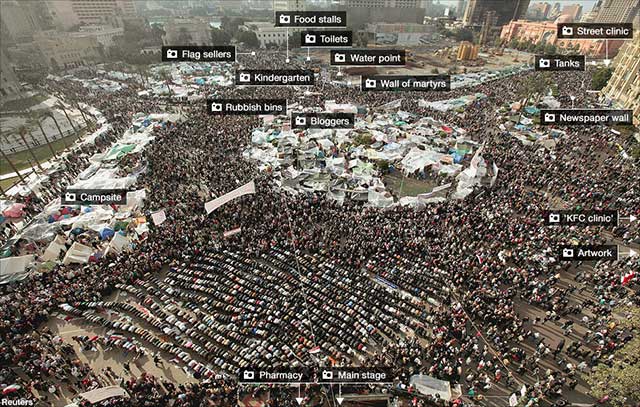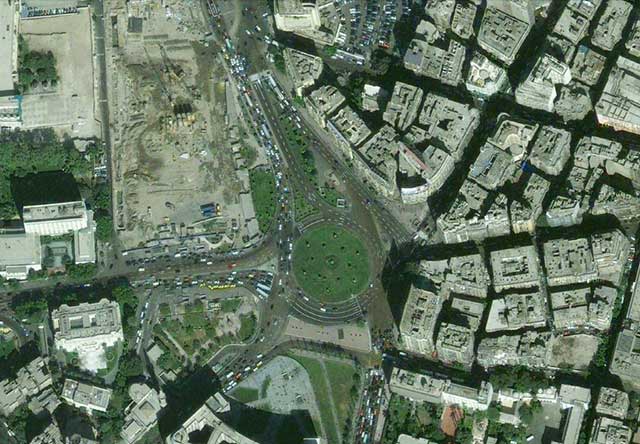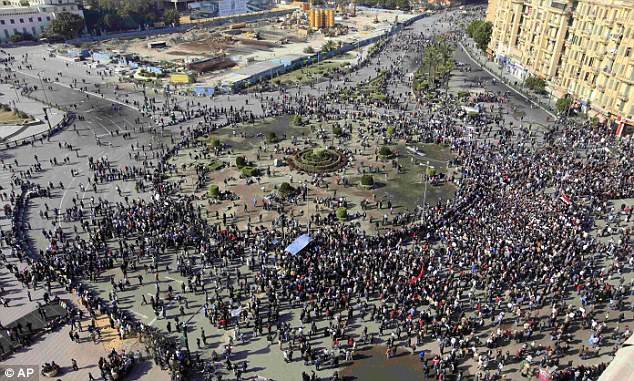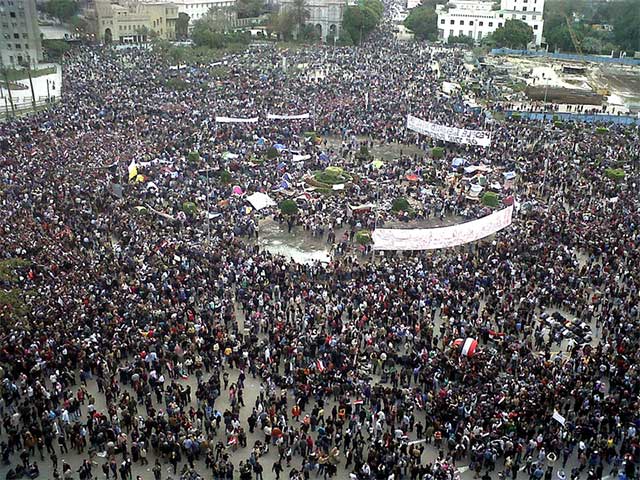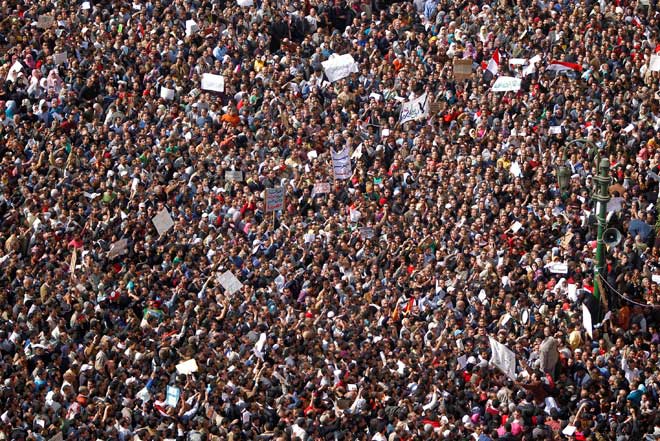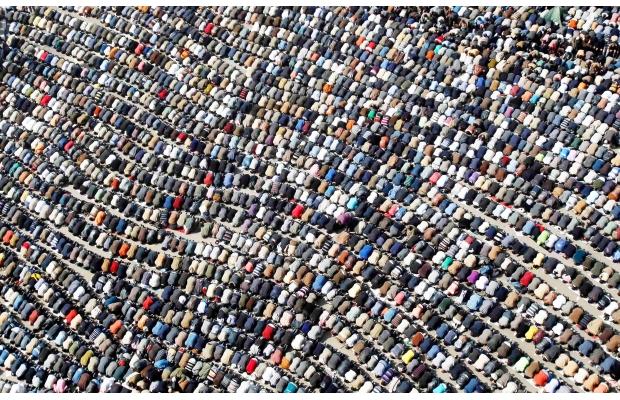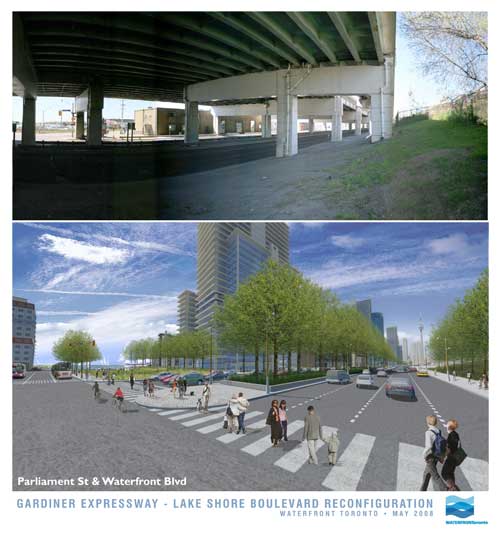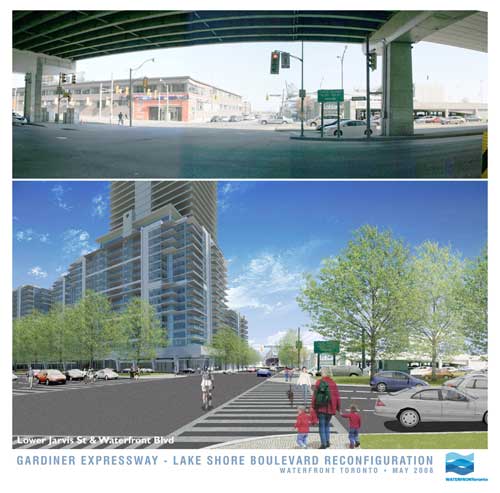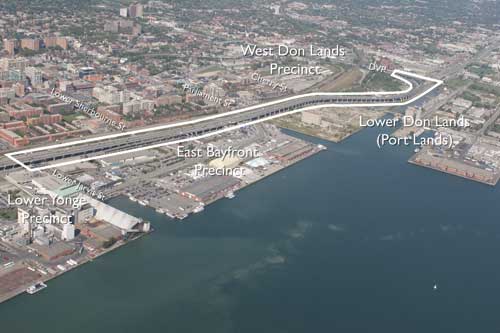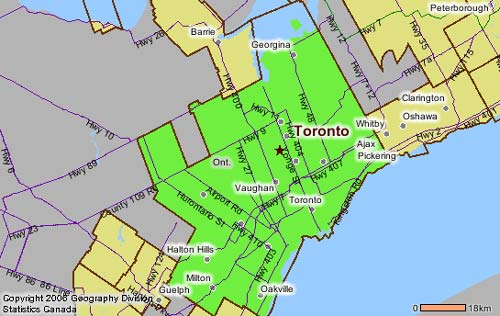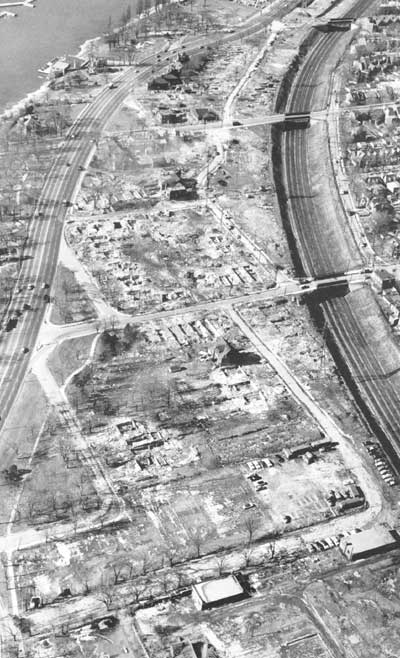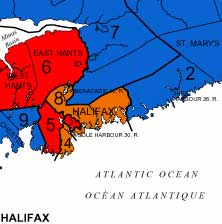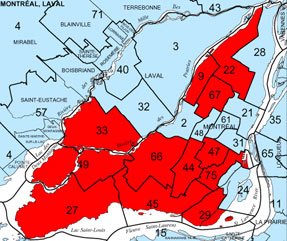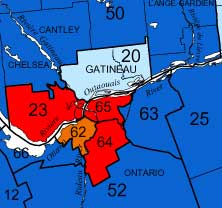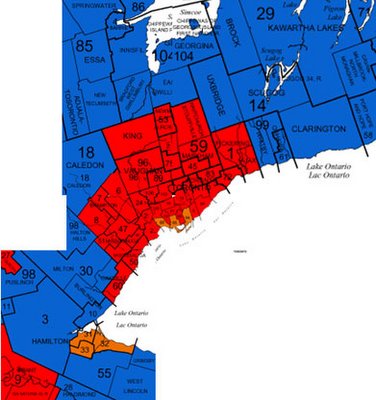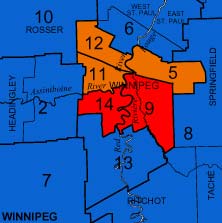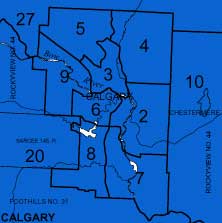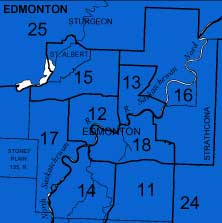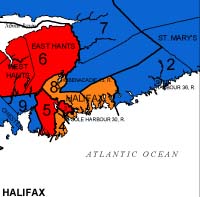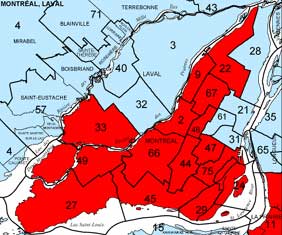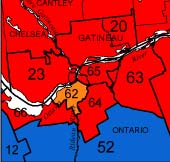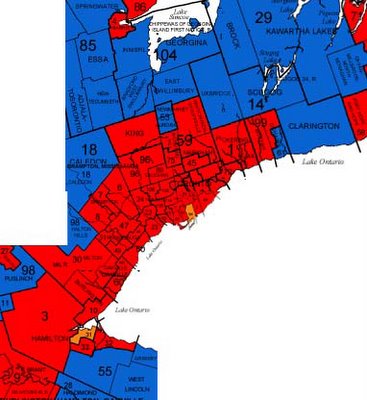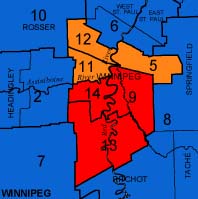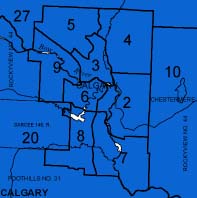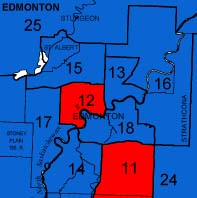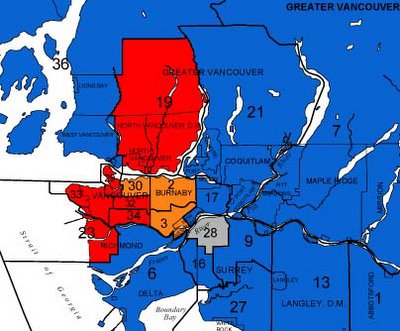
2010 Toronto Mayoral Election results by ward (by Marc Lostracco/Torontoist.com), move over with mouse to superimpose Old City of Toronto boundaries
In what one commenter called Mike Harris’ gift that keeps on giving (or rather, the pain that keeps on hurting), Toronto’s 12 year-old forced amalgamation continues to have significant and divisive ramifications on the City’s choice of mayor. The post-amalgamation political divide is frequently characterized as an urban/suburban divide, which in some ways it is, although in reality it simply follows the boundaries of the old pre-amalgamation City of Toronto, while the so-called “suburbs” are today so far from the edges of the metropolitan area that the name is slightly misleading (especially as in Toronto proper the suburbs tend to be poorer and very culturally diverse), and so I’ve called it the inner city/inner suburb divide instead. What the divide has meant is that it is easily possible for the Mayoral choice of the outer city to dictate the electoral result regardless of how the inner city votes, but in general not the reverse. In last week’s election, this was again the case, perhaps more clearly proved by the data than in any previous election (yes, even more so than the Mel Lastman years!), with outer Toronto clearly preferring Rob Ford, and the inner-city pre-amalgamation City of Toronto preferring George Smitherman.
While some may feel that a more “nuanced” view can be gained by mapping the amount of support the leading candidate in each ward received, this does not really change the simplified overall trend, but does suggest that “downtown” culture seems to play a big role in this political divide (see below).

Election 2010 results weighted (Map by Marc Lostracco/Torontoist.com)
However, this last conclusion is again undermined by mapping the results from individual polling stations rather than wards (see below). Here again, despite a more “fuzzy-edged” picture than the simple view, we can clearly make out that there were hardly any polls returning more than 40% support for Rob Ford within the boundaries of the pre-amalgamation City of Toronto. If anything, the distinction has become even more accurate against the exact boundaries of the former City!

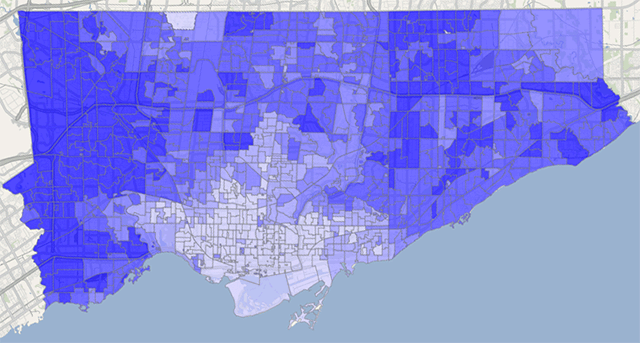
Percentage of mayoral votes cast for Rob Ford by poll (by Patrick Cain at patrickcain.ca), move over with mouse to superimpose Old City of Toronto boundaries
The unfortunate by-product of this strange correlation is a continued, and perhaps increasing animosity between the inner-city and the inner-suburbs. One is always blaming the other for forcing upon them the policies and direction representative of the politics of the “other”, pointing out how politically (and I think we can venture culturally, though not in the multicultural kind of sense) different and divided the two parts of the city really are. This fundamentally calls into question the wisdom (or perhaps, the true intent) of amalgamation. Given the choice, Toronto’s “inner-suburbs” would probably vote for Hazel McCallion if they only could, and perhaps the inner-suburbs should have been amalgamated with all the adjoining suburban areas that have a similar mindset, leaving the old City of Toronto alone at the centre, pursuing its bohemian, “crazy”, socialist, leftist (or simply centrist) path. After all, the City of Vancouver has hardly suffered by maintaining its old boundaries, and if anything has had a creeping, positive effect on the surrounding suburban municipalities, enncouraging them to progress on their own, little by little, at their own pace.
